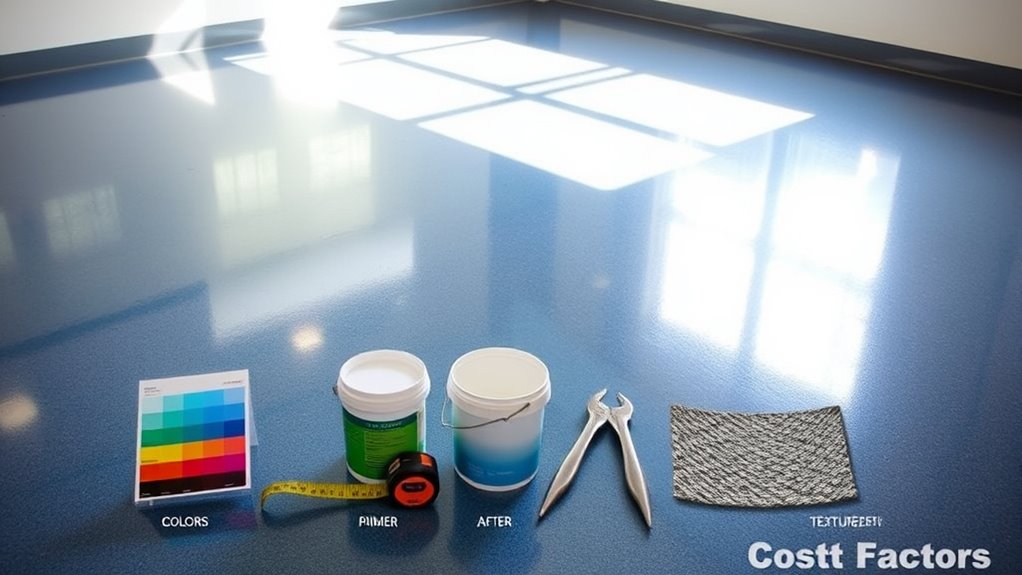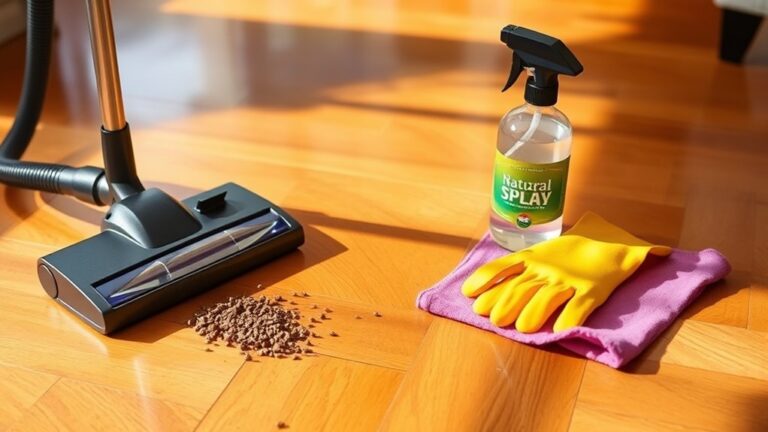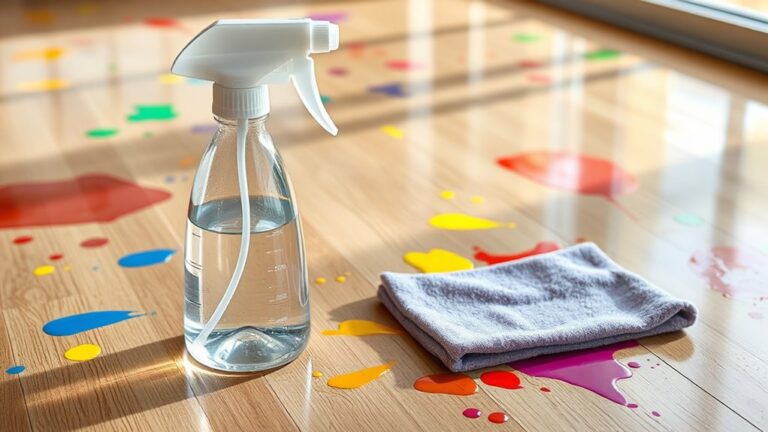The cost of your epoxy garage floor mainly depends on five factors. First, the size of your garage floor affects material and labor needs. Next, the type and quality of epoxy you choose impacts durability and price. Surface preparation is essential—cleaning and moisture testing help avoid issues. Labor costs vary by installer skill and location. Finally, extra features like colors or non-slip coatings add some cost too. Keep exploring to understand how these factors affect your budget.
Size of the Garage Floor
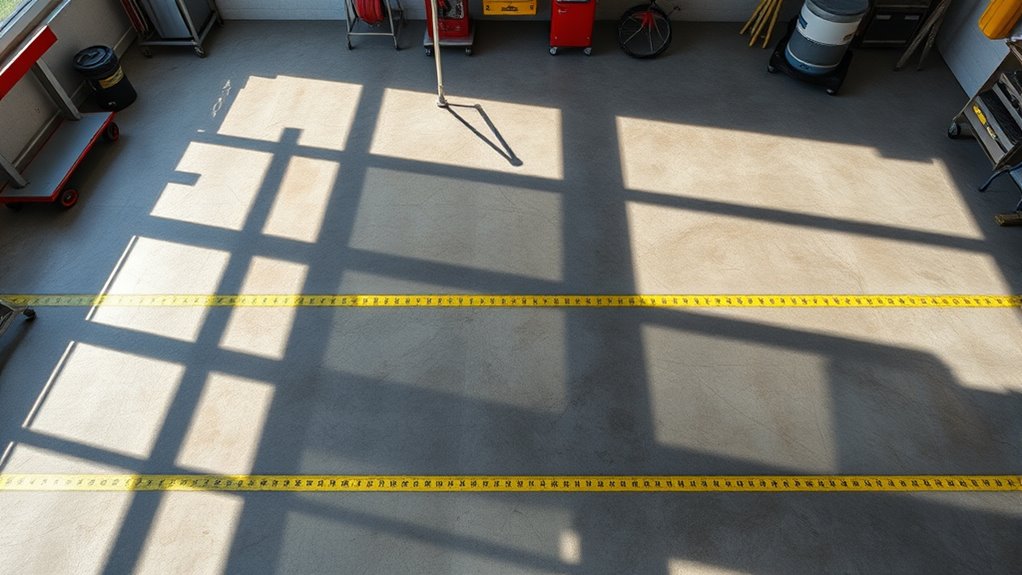
The size of your garage 床 plays a crucial role in determining the overall cost of epoxy coating. When you know your garage dimensions, you can better estimate the amount of epoxy needed and labor involved. Larger floors naturally require more materials and time, raising the price. Beyond size, your floor layout also impacts costs. Complex shapes or uneven surfaces may demand extra preparation or additional coats, affecting your budget. Measuring your garage accurately guarantees you won’t be caught off guard by unexpected expenses. By understanding how garage dimensions and floor layout influence pricing, you gain freedom to plan your project without surprises. This practical insight helps you balance cost and quality when deciding to coat your garage floor with epoxy.
Type and Quality of Epoxy Used
When selecting epoxy for your garage floor, you’ll find that both type and quality greatly affect durability and appearance. There are several epoxy varieties, including water-based, solvent-based, and 100% solids. Each offers different levels of protection, gloss, and longevity. Higher-quality epoxy tends to resist chipping, staining, and yellowing better than cheaper options, ensuring your floor looks great longer. While premium epoxy costs more upfront, it often saves you money by reducing maintenance and replacement needs. Choosing the right type and quality also impacts how well the floor holds up to chemicals, foot traffic, and vehicle weight. Understanding these quality differences helps you make an informed decision that fits your budget and freedom to enjoy a durable, attractive garage space without frequent repairs.
Surface Preparation Requirements
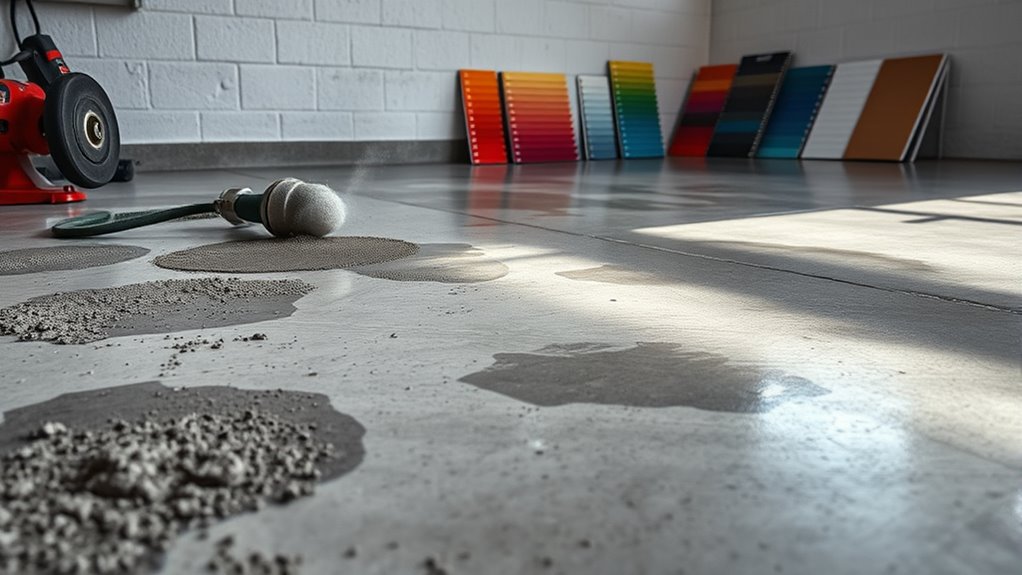
Before applying epoxy, you’ll need to thoroughly prepare your garage floor to guarantee proper adhesion and a smooth finish. Surface cleaning is your first step—remove oil stains, dirt, and debris using a degreaser and scrub brush. This makes certain the epoxy bonds well and lasts longer. Next, moisture testing is essential. Concrete can hold moisture, which may cause the epoxy to peel or bubble if not addressed. You can perform a simple plastic sheet test or use a moisture meter to check. If moisture issues arise, you’ll need to fix them before proceeding. Skipping these preparation steps might save time upfront but will cost you freedom later with peeling or uneven surfaces. Proper prep is key to a durable, attractive epoxy floor you can enjoy without worries.
Labor and Installation Costs
Although you might be tempted to tackle epoxy floor installation yourself, hiring a professional guarantees the job is done correctly and efficiently. Labor rates vary by region, but skilled installers typically charge more due to their expertise. Installation time depends on your garage size and floor condition; most jobs take one to three days. Keep in mind, rushing the process can lead to poor adhesion or uneven coating, costing you more in the long run. Professionals handle surface prep, mixing, application, and curing with precision, saving you effort and potential mistakes. When budgeting, factor in labor costs alongside materials to get an accurate total. Choosing experienced installers assures your epoxy floor lasts, giving you the freedom to enjoy a durable, attractive garage without hassle.
Additional Features and Customizations
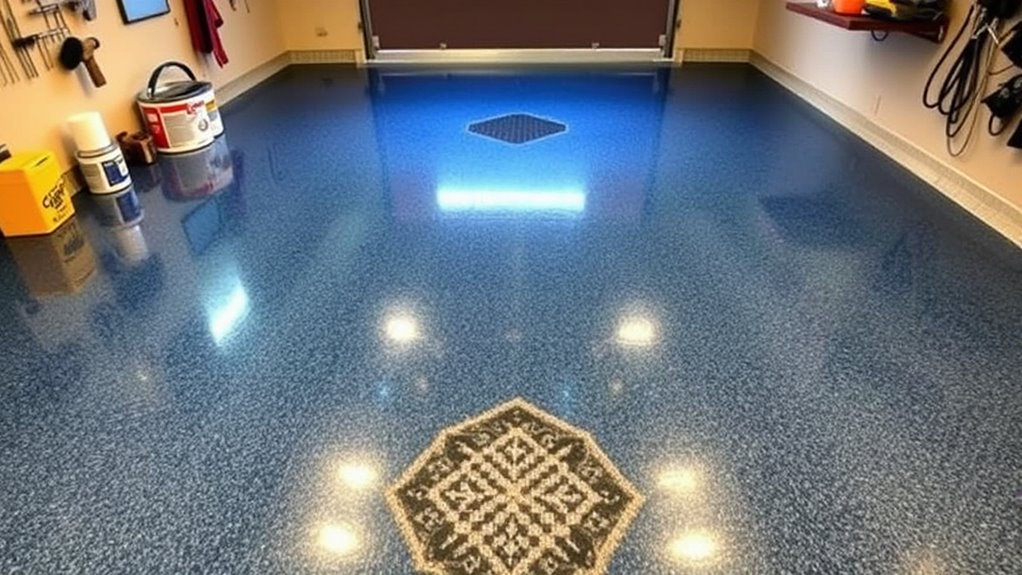
Beyond labor and installation, you’ll want to contemplate additional features and customizations that can enhance your epoxy garage floor’s appearance and functionality. Choosing from a wide range of color options allows you to personalize your space, whether you want a bold, vibrant look or a subtle, neutral tone. Design patterns, such as metallic swirls, flakes, or geometric shapes, add depth and style, making your garage floor stand out. You might also consider adding non-slip additives or UV-resistant coatings for safety and durability. Keep in mind that each customization can increase your overall cost but provides extra value by tailoring the floor to your preferences. By carefully selecting these features, you’re free to create a garage floor that perfectly suits your lifestyle and aesthetic goals.

